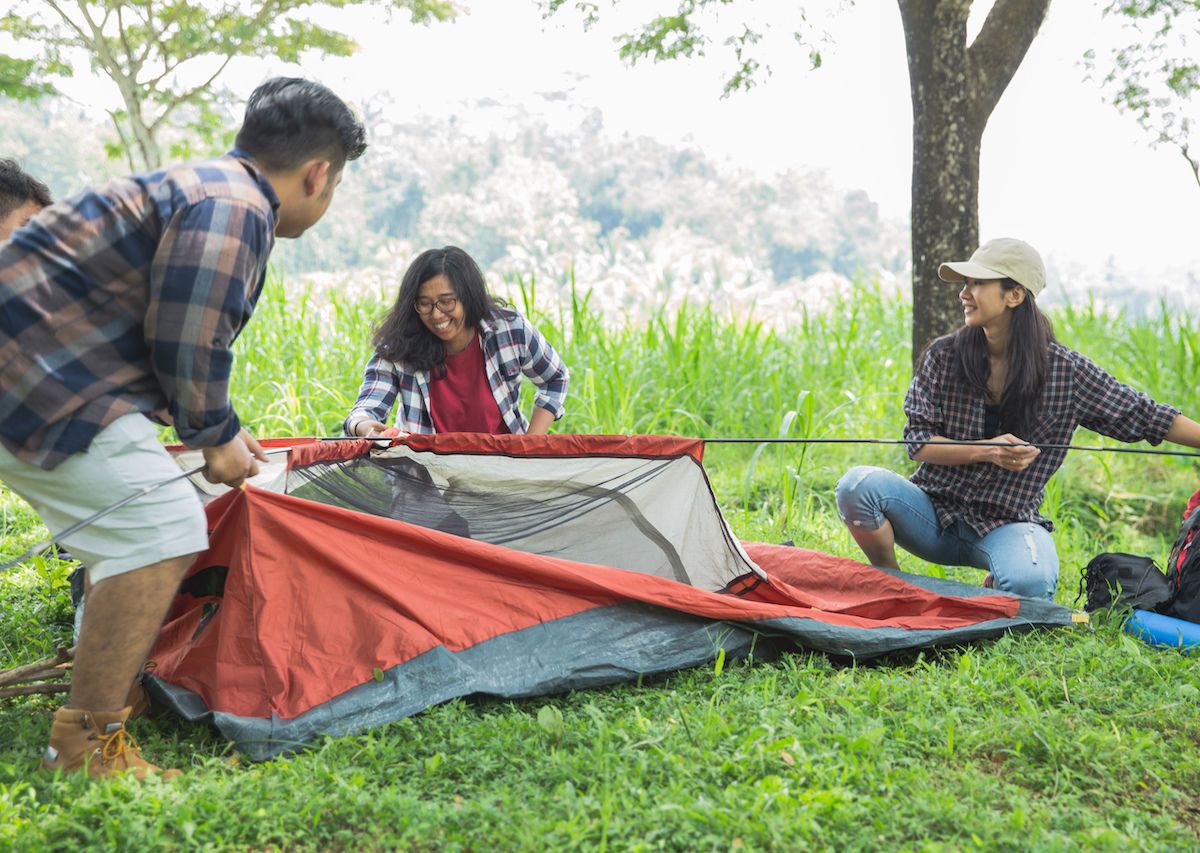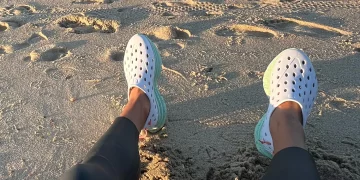Camping is one of the most liberating outdoor experiences you can have, but it also exposes you to a wide range of unpredictable weather conditions. Whether you’re hiking through the woods, pitching a tent by a tranquil lake, or facing the elements in a high-altitude base camp, your tent is your first line of defense against the environment. Understanding how to choose, prepare, and maintain your tent for every weather challenge is crucial for staying safe, comfortable, and dry no matter what nature throws your way.
In this article, we’ll explore the different types of weather you might encounter while camping, the key features to look for in a weather-resistant tent, and how to prepare your tent for challenging conditions. From torrential rain to freezing temperatures, let’s make sure your tent is ready for anything.
1. Understanding the Different Weather Conditions
Before we dive into the specifics of tent features and preparation, it’s essential to understand the key weather challenges you might face while camping.
a) Rainstorms and Flooding
One of the most common and annoying weather challenges is rain. Whether it’s a sudden downpour or a continuous drizzle, rain can quickly turn your campsite into a soggy mess. Heavy rain combined with poor drainage can lead to flooding, especially in low-lying areas or near streams.
b) High Winds
Strong winds can be a serious threat to tent campers, particularly when gusts reach speeds of 30 mph or more. Wind can destabilize your tent, causing it to collapse, or worse, blow away entirely. High winds are most common in mountainous regions, coastal areas, and during certain seasons.
c) Extreme Heat
Camping in hot weather can be deceptively uncomfortable. Without proper ventilation, your tent can turn into a stifling sauna. Prolonged exposure to heat can also lead to dehydration and fatigue, especially in desert environments.
d) Freezing Cold and Snow
Winter camping or higher elevation camping means dealing with freezing temperatures and potentially deep snow. Insufficient insulation or improper design can leave you shivering in the middle of the night. Snow accumulation can also add significant weight to your tent, risking damage or collapse.

e) Humidity and Condensation
High humidity is often overlooked, but it can make your camping trip unpleasant. Even if it’s not raining, moisture from the air can condense on the inside of your tent, soaking your sleeping bag and gear. This is especially common in forested or coastal areas.
f) Sun Exposure
Exposure to the sun’s UV rays can cause tents to degrade over time, fading fabric and weakening seams. Additionally, if your tent doesn’t have adequate ventilation, it can trap heat inside, making it uncomfortable even when temperatures are mild outside.
2. Essential Tent Features for Every Weather Challenge
Your tent is your shelter, and ensuring it’s designed to withstand the elements is crucial. While not all tents are built the same, some key features can make a world of difference in preparing for extreme conditions.
a) Waterproofing and Sealing
One of the most important aspects of a tent is its ability to keep water out. Look for tents that come with high-quality waterproof coatings, such as polyurethane (PU) or silicone. The tent’s fabric, as well as the seams, should be sealed to prevent water from seeping in during heavy rainfall. A tent with a bathtub floor design (with elevated edges) is another great feature, as it helps keep water from pooling inside your tent.
For extreme conditions, you might want a tent with a hydrostatic head rating of 3000mm or higher. This rating refers to the water resistance of the fabric. In layman’s terms, the higher the number, the better the tent is at repelling water.
b) Wind Resistance
Wind can quickly turn a comfortable campsite into a disaster if your tent is not properly designed for it. Look for tents with sturdy, flexible poles made from materials like aluminum or fiberglass. These materials can bend under pressure, rather than breaking, which makes them ideal for strong winds.
Another important design consideration is the tent’s shape. Geodesic or semi-geodesic tents, which use multiple intersecting poles, tend to perform better in high winds. Additionally, ensure your tent comes with guylines and stakes, and make sure the tent body is taut to minimize wind resistance.
c) Ventilation
Ventilation is key for maintaining comfort in your tent. Even in cold weather, you need airflow to prevent condensation buildup. Many modern tents come with adjustable vents at the top or sides to encourage airflow and reduce moisture inside the tent.
For hot weather, large mesh panels can be crucial for keeping air circulating. Look for tents with a full-mesh canopy or additional windows that can be opened and closed depending on the conditions.
d) Thermal Insulation
In cold weather, you want a tent that provides thermal insulation while still allowing moisture to escape. A double-walled tent design is generally the best for cold conditions. The inner layer acts as an insulator, while the outer layer provides a waterproof barrier. Additionally, having a tent with a snow skirt, or a fabric that extends to the ground, can help prevent snow from blowing underneath the tent.
e) UV Protection
If you’re camping in a sunny environment, you want a tent that protects against UV rays. Tents with fabrics treated with UV inhibitors or coatings can prevent the sun from breaking down the fabric over time. Look for tents labeled as UV-resistant, especially if you’re planning extended camping trips in sunny climates.
3. Preparing Your Tent for Weather Challenges
Having the right tent is only half the battle. To ensure your shelter stands up to the weather, you need to prepare it properly before and during your trip.
a) Check the Weather Forecast
Always check the weather forecast before heading out on your camping trip. Knowing what to expect can help you pack the right gear and prepare your tent accordingly. If you’re expecting heavy rain, for example, you may want to set up a rain tarp or cover for additional protection.
b) Site Selection
Your tent’s location plays a significant role in how well it performs in challenging weather. Always avoid setting up your tent in low-lying areas, as they are more prone to flooding in heavy rain. Choose higher ground and avoid pitching your tent near streams or rivers that could overflow.

In windy conditions, avoid setting up your tent in areas with little natural shelter (such as a ridge top). Instead, choose a location with trees or rocks that can block the wind.
For snow camping, dig a small trench around your tent to help divert snow and ice buildup. This can also help create a windbreak, keeping your shelter stable.
c) Anchoring and Securing Your Tent
Properly securing your tent is essential in strong winds. Make sure your tent stakes are properly driven into the ground, and use all guylines to stabilize the tent. If you’re camping in sandy or loose soil, consider using sandbags or snow anchors instead of standard stakes.
d) Use a Groundsheet
A groundsheet or footprint is a protective layer that sits under your tent, shielding it from abrasion, moisture, and dirt. It’s an especially good idea in high-moisture conditions, like when you’re camping in damp, humid environments or during a rainstorm. A groundsheet can also provide an extra layer of insulation in cold conditions.
e) Tent Maintenance
Ensure your tent stays in top condition by checking it regularly for wear and tear. Before heading out, inspect the tent for any holes or weak spots in the fabric, and check the zippers to make sure they’re functioning smoothly. Repair small damages immediately, as even minor tears can lead to bigger problems in challenging weather.
4. Dealing with Specific Weather Challenges
a) In Case of Heavy Rain
If you’re caught in a heavy rainstorm, ensure that your tent is sealed properly and all doors or windows are closed. Use a rainfly (the outer covering) to add an extra layer of protection. Keep your gear inside the tent to prevent it from getting wet, and avoid standing water. If possible, use a tarp or rain cover to create a dry zone outside the tent.
b) Handling Windy Conditions
If you’re camping in windy conditions, ensure that your tent is staked securely. If the wind is expected to be extremely strong, consider using a weather-resistant tent that’s specifically designed for high winds. You can also try pitching your tent with the entrance facing away from the wind, or using the natural shelter of trees or rocks to buffer the wind.
c) Winter Camping
For winter camping, ensure your tent is rated for sub-zero temperatures. Insulate the floor of your tent with extra padding or sleeping mats, and use a four-season tent with a solid outer shell to keep out wind and snow. Pay attention to snow accumulation on your tent, as it can quickly add weight and cause your shelter to collapse.
5. Conclusion
A successful camping trip depends largely on your tent’s ability to stand up to the weather. By choosing a tent with the right features for your environment, preparing it properly, and taking a few extra precautions, you can ensure that you stay comfortable and safe, no matter what the weather throws at you.
Camping is about embracing nature, but it’s also about being prepared. With the right tent and a bit of preparation, you can turn any camping adventure into a memorable, enjoyable experience, no matter the forecast.























